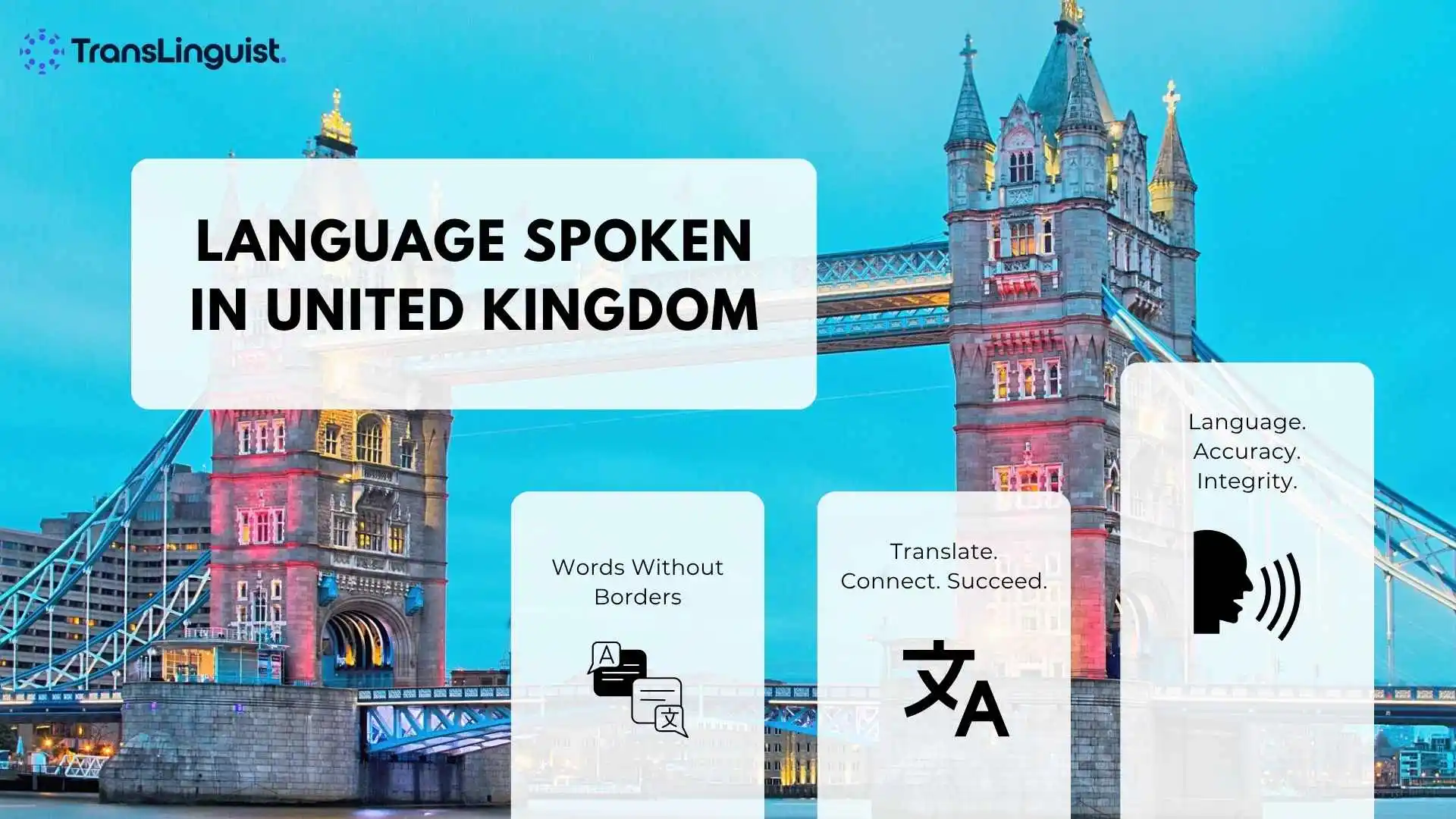People sometimes sum up The Language Spoken in UK as “English,” yet real life is richer. What you hear comes from centuries of movement, rules, and culture: English in the middle, plus Celtic languages and a long list of community languages. If you’re planning content, services, or compliance, treat The Language Spoken in UK as a living map, not a single data point that spans how people study, buy, vote, and get support across the four nations.
The UK’s Most Spoken Languages: A Melting Pot of Cultures
Yes, English runs the government, schools, and national media, but city streets sound broader. Schools, markets, and stations echo with Polish, Punjabi, Urdu, Bengali/Sylheti, Romanian, Arabic, Portuguese, Spanish, Gujarati, and French. That reality shapes decisions on translation, interpreter coverage for events, and bilingual call routing.
Top 10 Most Spoken Languages in the UK (2024 Update)
Apart from English, prevalent community languages commonly include Polish, Punjabi, Urdu, Bengali/Sylheti, Romanian, Arabic, Portuguese, Spanish, Gujarati, and French. While standings vary by region and by measurement approach (“main language,” “home language,” or “proficiency”), the underlying pattern persists: substantial European and South Asian communities. For national operators, language priorities should be regionalized; needs in London or Birmingham may differ from those in Glasgow, Cardiff, or Belfast.
English in the UK: Dialects, Accents, and Evolution
English itself is plural. The capital speaks in Cockney and MLE; Liverpool’s Scouse carries the docks; Geordie holds echoes of Norse; Welsh English has lift; Scottish and Northern Irish English arrive with their own build of grammar and words. Editors who tune into this range deliver scripts, VO, and captions that feel right, true to the voice, never a cliché.
Indigenous Languages: Revival and Recognition
Welsh (Cymraeg), Scottish Gaelic (Gàidhlig), Irish (Gaeilge) in Northern Ireland, and Cornish (Kernewek) participate in public life via education, broadcasting, signage, and cultural initiatives. Welsh enjoys substantial institutional support and defined growth objectives; Gaelic and Irish maintain dedicated education pathways and media; Cornish advances through community-driven revival. Practically, public-facing outputs may require bilingual signage, dual-language forms, and interpreting or subtitling, particularly within bilingual local authorities.
Immigrant Languages: Shaping Modern Britain
In the last twenty years, language maps have settled: Punjabi and Urdu across the Midlands and North, Romanian and Polish near warehouses and farm belts, Arabic and Somali in London boroughs, and Portuguese in hospitality from the South East to the Channel coast. The smart play is to target the documents people use most, and have interpreters on hand for health, legal, welfare, and housing cases.
Preserving Linguistic Diversity
A National Priority
From councils and culture groups to broadcasters, lots of people keep community languages alive with bilingual classes, kids’ shows, local radio, and festival stages. Universities and charities pitch in with glossaries, beginner readers, and oral-history archives for both seasoned speakers and beginners. For brands and nonprofits, teaming up with these projects builds trust and saves do-overs.
Tech and Education
Digital tools, such as captioning, speech recognition, and accessible e-learning, now support day-to-day use and revitalization. Welsh language courses attract large online cohorts; Gaelic and Irish receive fresh STEM terms; community creators bring Cornish and Scots into social video. In classrooms and libraries, bilingual clubs and reading hours help families maintain home languages alongside English, which correlates with better educational outcomes and service navigation.
A Historical Reflection: The Evolution of Languages in the UK
The linguistic story spans Celtic roots, Roman and Norse contact, Norman French layers, imperial trade, decolonization, and modern mobility. That history explains today’s mosaic: English provides common ground; indigenous and community languages supply identity and continuity. For organizations, acknowledging this arc isn’t cosmetic it guides which archives to translate, which museum exhibits need bilingual captions, and how to write place-names and community terms accurately.
Conclusion
Treat the Language Spoken in the UK as a design input, not an afterthought. English remains the shared platform, while indigenous and community languages determine which moments deserve translation, captions, or interpreters. When you focus where it counts, customers get clearer answers, stay happier, and you stay compliant. TransLinguist can translate and transcreate core materials, add live captions and subtitles, and set up in-person or remote interpreting anywhere in the UK. With a practical plan, the Language Spoken in UK becomes an advantage, with clearer communication, fewer escalations, and stronger local trust.
Ready to align your UK content and events with reality on the ground? Talk to TransLinguist about a right-sized mix of translation, live captions, and interpreting that respects the Language Spoken in the UK and delivers measurable results.
FAQs
Which community languages are most common besides English?
You’ll often hear Polish, Punjabi, Urdu, Bengali/Sylheti, Romanian, Arabic, Portuguese, Spanish, Gujarati, and French, just not in the same amounts everywhere.
Is British Sign Language (BSL) widely used?
BSL is the primary language for many Deaf Britons and is also used by hearing signers. Public services increasingly provide BSL interpretation and captions for accessibility.
How should we prioritize translations for the UK market?
Focus on vital documents and high-impact journeys (onboarding, safety, billing, returns). Then add subtitles/captions and interpreting for events or complex support calls in the languages most common in your service area.
Where does TransLinguist fit?
TransLinguist provides translation, transcreation, live captions and subtitles, and on-site/remote interpreting plus terminology management—so teams communicate clearly and consistently across the UK.



